If power Android users can agree on one thing, it’s that Google, carriers, and smartphone manufacturers are maybe not the best at executing on Android OS updates. Things were going great in the early days when there was only the one flagship Android phone, but as more companies and carriers got involved the update situation fell apart. Google tried to intervene with the Android Update Alliance, which resulted in exactly zero improvements to update timeliness.
For those interested in getting the latest and greatest OS update the second it’s announced, these delays are a known negative of the Android platform. The growing history of OS releases shows all carriers and smartphone manufacturers drag their feet in the application of updates—but some carriers, some manufacturers, and some combinations thereof are marginally better than others at getting updates to their phones.
To see how well all of these companies have been doing, we took a selection of the highest-profile Android phones released since the OS debuted, going all the way back to the T-Mobile G1. We compared Google’s release of each new Android OS version against the date that it was applied to each phone, then calculated the delay (rounded to months). (Note that we define "update" as a major point release of Android—2.2 Froyo, 2.3 Gingerbread, 4.0 Ice Cream Sandwich. More minor updates or firmware releases are not accounted for here.)
Something to take note of is that some phones, for one reason or another, never received updates during their lifetime. For the phones we selected, this wasn't a result of bad timing either—all phones we looked at had Android updates available to them within a reasonable time frame relative to the handset’s release, but the carrier or manufacturer never got around to pushing one out. Of the phones we studied, the carriers each have one orphaned, non-updated phone. Broken down by manufacturers, Motorola has three, HTC has one, and Samsung and LG have none. The number of orphaned phones each manufacturer has doesn't correspond to their overall upgrade pace, but it is an important metric to keep in mind when assessing the company’s efficacy with updates in general.

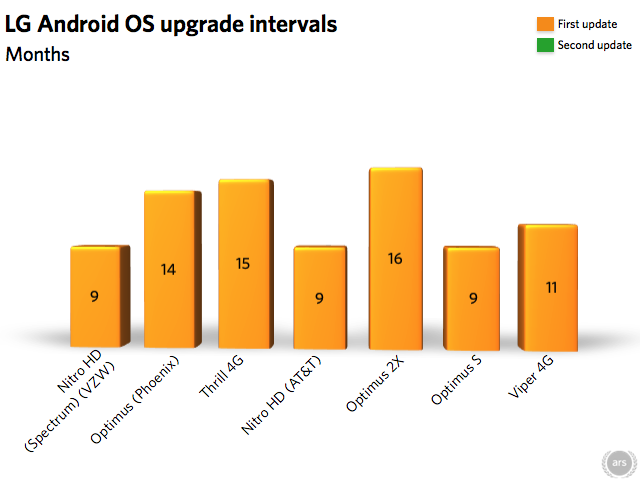
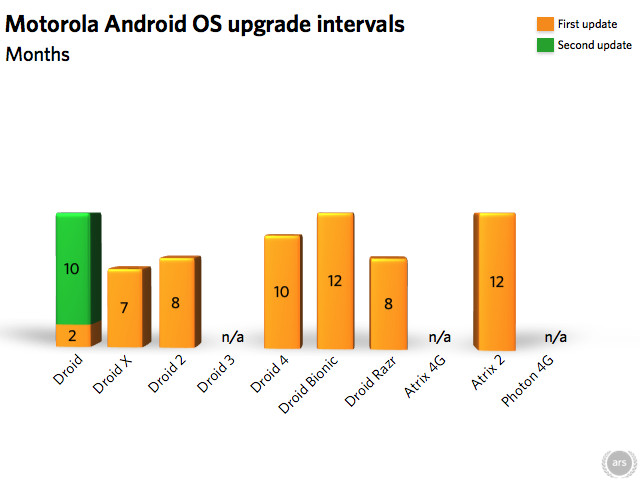

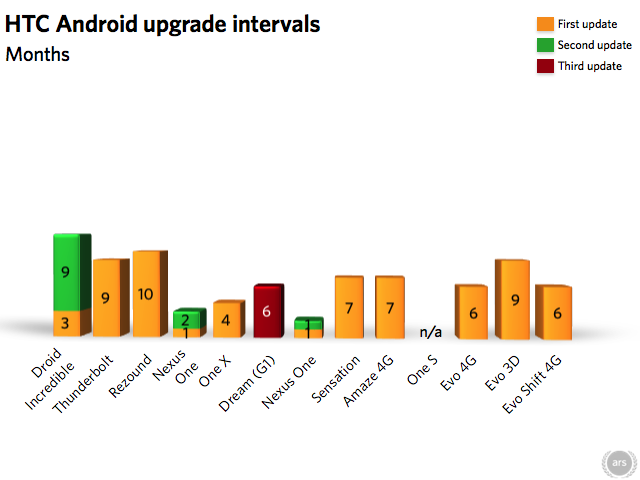
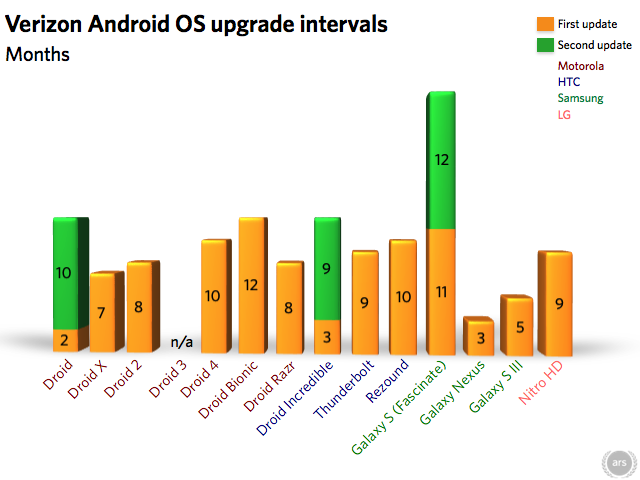
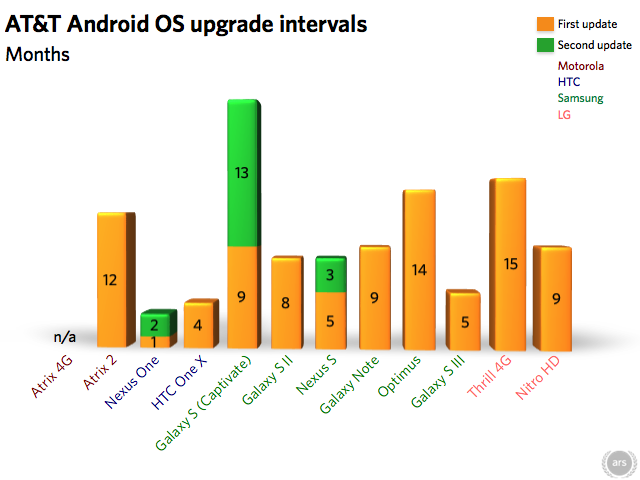

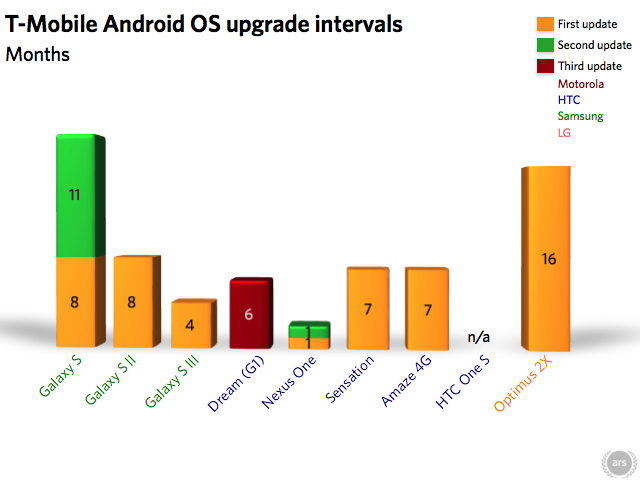

 Loading comments...
Loading comments...
